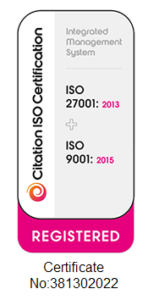To the Moon and Back: Measuring Your Carbon Footprint with Physical Meetings
“The immediate climate crisis demands that we identify sustainable alternatives to large in-person conferences now, taking advantage of the learning opportunity that the pandemic provides us.” — Reducing the Carbon Footprint of Academic Conferences: The Example of the American Society of Tropical Medicine and Hygiene
The risks posed by in-person meetings have been widely explored, with many people increasingly reluctant to travel for business conferences due to health concerns. But what about the environmental cost? We all know about our carbon footprint and that what we do and how we travel contributes to climate change. The question we might need to ask now is, can we justify long-distance travel to conferences and symposia?
One recent paper — Reducing the Carbon Footprint of Academic Conferences: The Example of the American Society of Tropical Medicine and Hygiene — calculates the carbon emissions associated with a 2019 conference. According to the paper, air travel of 4,834 participants amounted to 27.7 million miles or 44.6 million kilometres. And that translates to 58 return trips to the moon!
Making virtual connections
The past two years with Covid have changed perceptions about travel to events, but there’s still a view that physical meetings offer value that virtual meetings can’t, for example, the opportunity to see people and have off-the-cuff conversations. The reality is you can still have those “water-cooler” moments online if you set up your virtual meetings thoughtfully.
With people now accustomed to remote working and organisations reluctant to send delegates to meetings, there is an opportunity to rethink those carbon-heavy conference trips. Increasingly, speakers are likely to feel more confident about presenting virtually and question the need to fly to another country to work. For healthcare professionals in particular, the flexibility of virtual means they can hold a clinic and still turn up to a meeting three hours later to impart their knowledge.
While two years of isolation certainly created stress for many people, there is a sense that not travelling to meetings was both beneficial to people’s time and to the environment. As a result, there may well be more societal pressure to think twice before jumping on a plane for a meeting.
Creative conference design
In future, good conferences will be those that recognise these environmental concerns and come up with alternative, more sustainable options. This leads to the hybrid concept, which includes an element of localisation as well as ways to connect and engage virtually.
New approaches might include encouraging inter-country delegates to connect virtually while locals attend in person and use the opportunity to promote the event as sustainable. There could even be an opportunity to measure the sustainability of your event, perhaps by offering incentives to come by train and discouraging anyone from using their cars or from flying to get to a meeting. If in-person connections are sought, you could consider streaming from regional centres or hubs in different parts of the country or world so people in those locations can connect. Indeed, in the carbon footprint paper, the authors suggest three alternatives to in person meetings: 1) alternating in-person and online conferences, 2) offering a hybrid in-person/online conference, and 3) decentralising the conference with multiple conference venues.
Increasingly, people are likely to be unimpressed by events that don’t offer a virtual option and that could lead to fewer people choosing to attend. Digital platforms and other meeting technologies have come a long way, so there is no reason not to run your sessions online. For those unsure how to create an engaging, Hollywood-style virtual session, partners like Open Audience can help you to shine.
About the author
Leslie Robertson is the Founder of Open Audience, an audience engagement consultancy that specialises in making life sciences meetings more engaging with more positive, successful outcomes – whether in-person or in the virtual space. The Open Audience team helps to strategise and prepare pre- and post-meeting as well as providing real-time support and guidance during the meeting. Open Audience also offers customisable, multilingual engagement platforms that include interactive polling, surveys, and ideas exchange.

